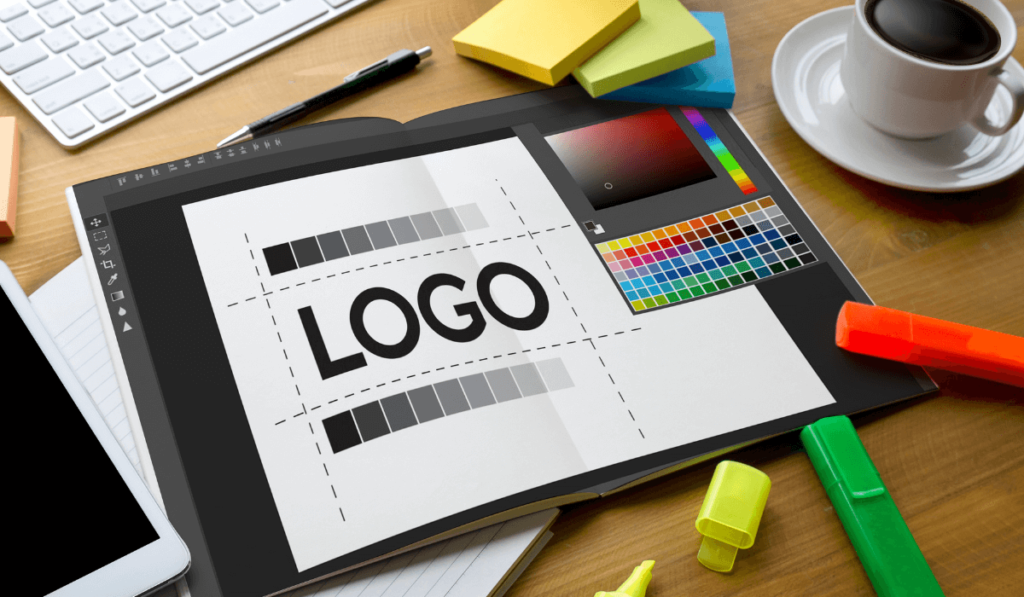Build a brand from Scratch! What does your brand represent? Your brand is not just a mere name and logo, but something that makes your business recognizable and distinguishable in a crowded market. Your brand is how the audience reacts and acknowledges your business whenever they connect with your business.
Like individuals, businesses also have names, logos, specific colors, services, products, and voices to manage the credibility perceived by the world. However, you cannot build a brand without being consistent. Patience and consistency are the keys to success when you extend and build a brand from scratch.
How to Build a Brand from Scratch?
Here are some steps you can follow to build a brand from scratch:
- Pick your niche, focus, and business personality.
- Research your target audience
- Keep note of your competitors.
- Plan and select your business name.
- Consider writing a Slogan or a witty pick-up quote
- Plan your brand look (colours and font).
- Design your logo.
- Focus on your target and expand your branding
- Evolve your brand
Your brand identity is crucial. It is necessary that you might revisit these points as you pivot your brand. It is also essential that you consider each of these aspects as you shape your business’ brand. As Rome wasn’t built in a day, building a brand is also a professional task. Let us dive into the groundwork and know how to build a brand from scratch.
1. Understanding your market
Before making any plans and final decisions about your brand, the most crucial step is to understand the current market. It is essential to figure out who your potential customers are and what the current competitors’ trends are. When you want to build a brand from scratch you need to do the proper market research by following the below steps.
Here’s how you can draft an idea and analyze your market to build a brand from scratch:
- Google your product or service category (keep a check on the ranking results)
- Analyse the competitors that come up (check for similar products and services like yours)
- Check for subreddits and product recommendations.
- Connect to people who are part of your target market (analyse their purchase mindset)
- Check for relevant social media accounts or pages your target audience follows.
- Shop online or offline and analyse how customers would browse products.
2. Define your brand’s focus and Niche

When you have just started planning, your brand can’t consist of anything to everything and everyone. It’s important to define a niche, find your focus and let that focus expand to other parts of your business as you evolve it.
It is necessary to address certain questions like what’s your positioning in the market, what words you associate with your brand, how do the customers look at your brand, and what kind of personality your customers are attracted to?
3. Choose a business name for brand
“Water by any other brand name would still be transparent and heaven for the thirsty. But a brand like Nike or Adidas by any other name would be seen on fewer feet.” Like every individual, your business must possess a name. Yes, A Name! Depending on the kind of business you have planned for, your branding name plays a crucial role.
The name of your brand impacts your logo, your marketing practices, your domain, and your trademark. While establishing your business, the personality, focus, reputation, and services collectively extend the meaning of your brand name. As a business owner, probably establishing your brand name is one of the biggest commitments.
Here are some creative methods or ideas:
- Make up a word like KitKat.
- Reframe unrelated words (like Apple for Computers).
- Use a metaphor to define your brand.
- Describe your products (like The Shoe Company)
- Alter a word by adding letters, removing letters, or using Latin endings (like Tumblr, not Tumbler).
- Design an acronym like BMW (Bayerische Motoren Werke) or use the initials of a longer name like HBO (Home Box Office)
- Combine two words like Facebook (Face + Book)
4. Pick colours and fonts that associate with your brand
The Apple for the computers may not be red. It is essential to select colors and fonts that associate and would represent your brand. Once you’ve got a name, you’ll need to visually represent your brand. Deciding upon these details would come in handy when you start to build your business website.
Choosing your colours
Colors not only define the look of your brand but also convey the sentiment you want to convey and help make it consistent across the brand. You should choose a color that can distinguish you from your direct competitors, so as not to mislead consumers. The psychology of color is not an exact science, but it helps to inform your choices, especially in terms of the colors you choose for your logo.
Choosing your fonts
At this point, it’s also good to see the fonts you might want to use on your website. Choose up to two fonts to avoid unnecessarily confusing your visitors: one for the title and the other for the body of the text. You can use Font Pair to search for multiple matching fonts and download them when necessary.
5. Write a slogan (Describe your brand)
A crisp and catchy slogan is an asset for your business. It is something brief and descriptive that you can put in your website headline, social media bio, business card, and everywhere else where you’ve got little space to create a big impact. These slogans can be an essential part of your marketing strategy and can be changed or modified from time to time for better impact.
A good short slogan can make a strong impression. Here are some ideas you can follow while writing a slogan:
- Claim it: Death Wish Coffee—”The World’s Strongest Coffee”
- A metaphor like Red bull—”Red Bull gives you wings.”
- Think of your customers’ attitude: like Nike “Just do it.”
- Describe it: “Women’s fashion boutique”
6. Design your logo

When considering brand building, the company logo may be one of the first things you think of. And there are good reasons. After all, it is the spokesperson for your company and it can exist wherever your brand is located. Ideally, you need a logo that is unique, recognizable, and expandable to fit all sizes.
Consider all the locations where your brand logo should exist, from your website to your Facebook page profile picture, and even the little “favorites” you see in your current browser tab. For example, if your Instagram profile photo has a text logo, it is almost unreadable. To make your life easier, get a square version of the logo that contains an icon element that is still recognizable even at a smaller size.
7. Expand, and evolve your brand Presence

Building a brand is not limited to creating a logo or slogan, it is even more than just launching your brand. No matter where your customers interact with you, your brand must exist and stay consistent, from the theme you choose for your website to the marketing you do, customer service, and the way you package and ship your products.
You will continue to shape and develop your brand because you will reach more customers and learn more about who they are and how to talk to them. It is important to realize that you can never have 100% control over how people perceive your brand.
You can steer customers in the right direction, make a good first impression, and manage your reputation, but you cannot control the personal views that exist in everyone’s mind. All you can do is do your best to resonate with your core audience. But hopefully, at this point, you have the tools, knowledge, and resources to start using.
To improve brand engagement and positioning many start-ups are implementing digital marketing to gain quicker results in a small time span. You can check the advantages of implementing digital marketing to build your brand from scratch. You need to keep track of the above-mentioned steps to build a brand from scratch successfully.




